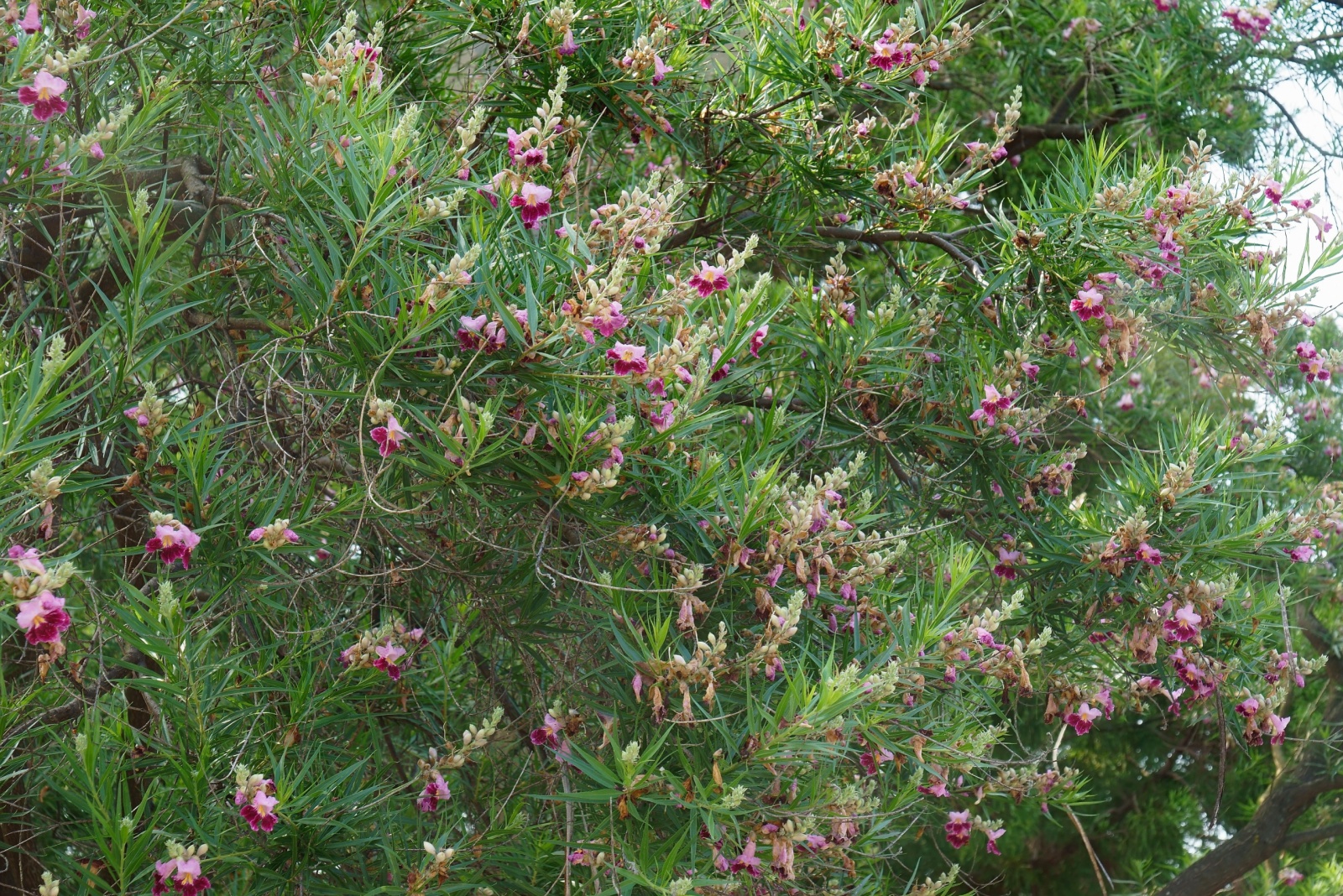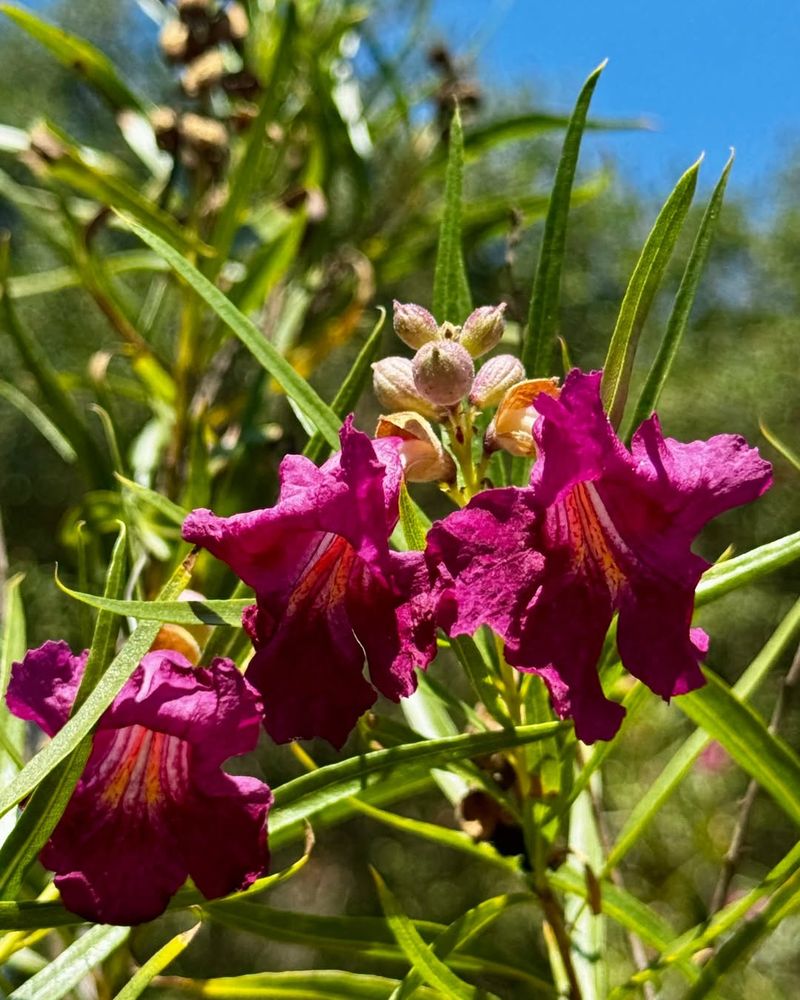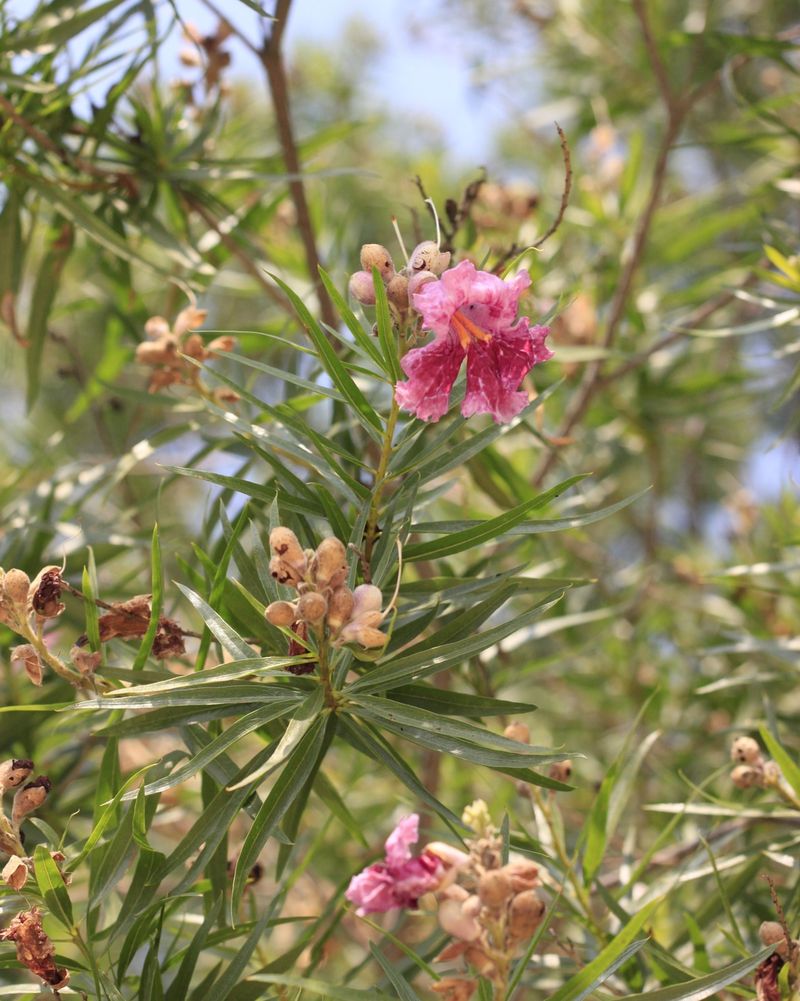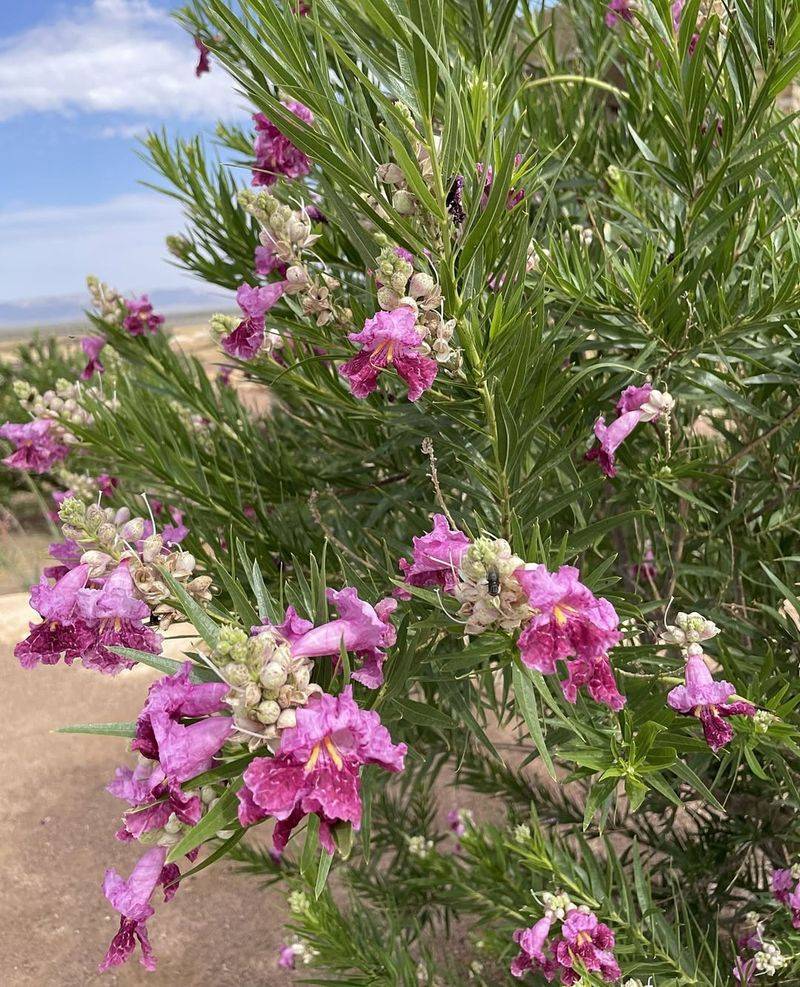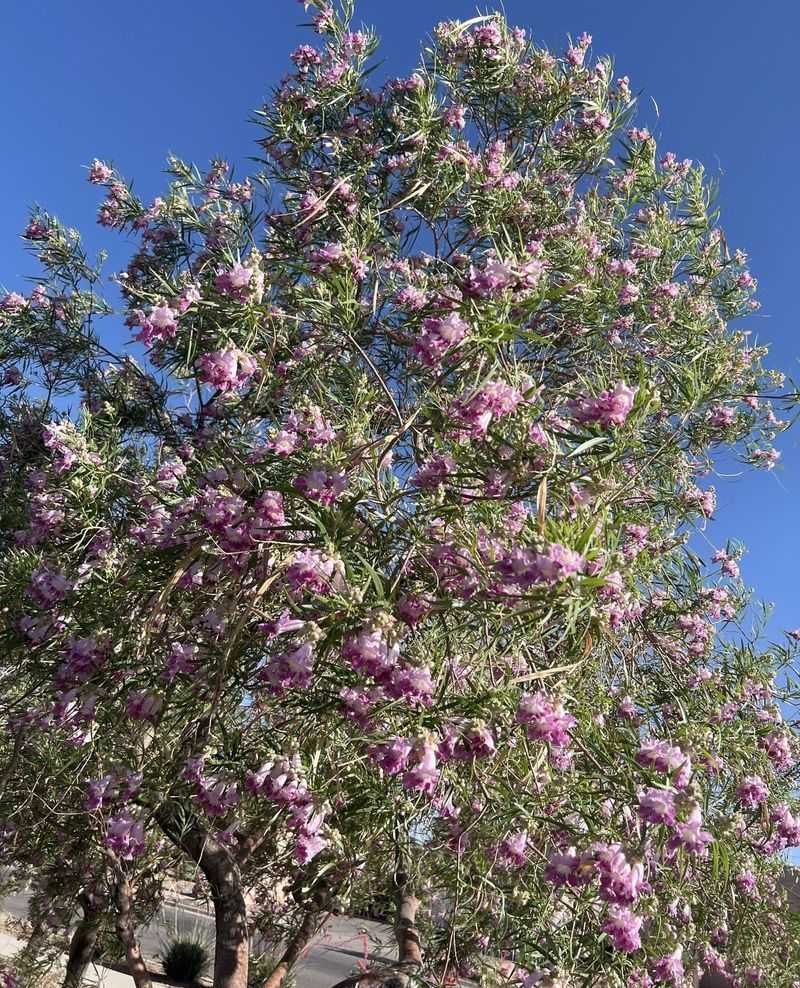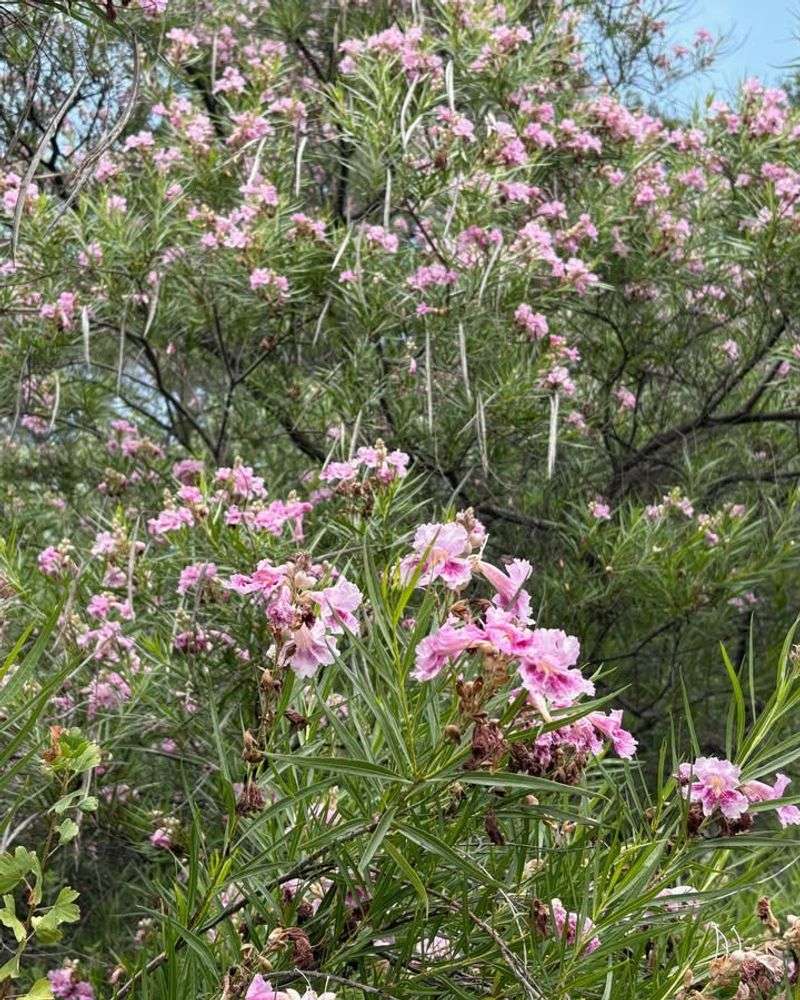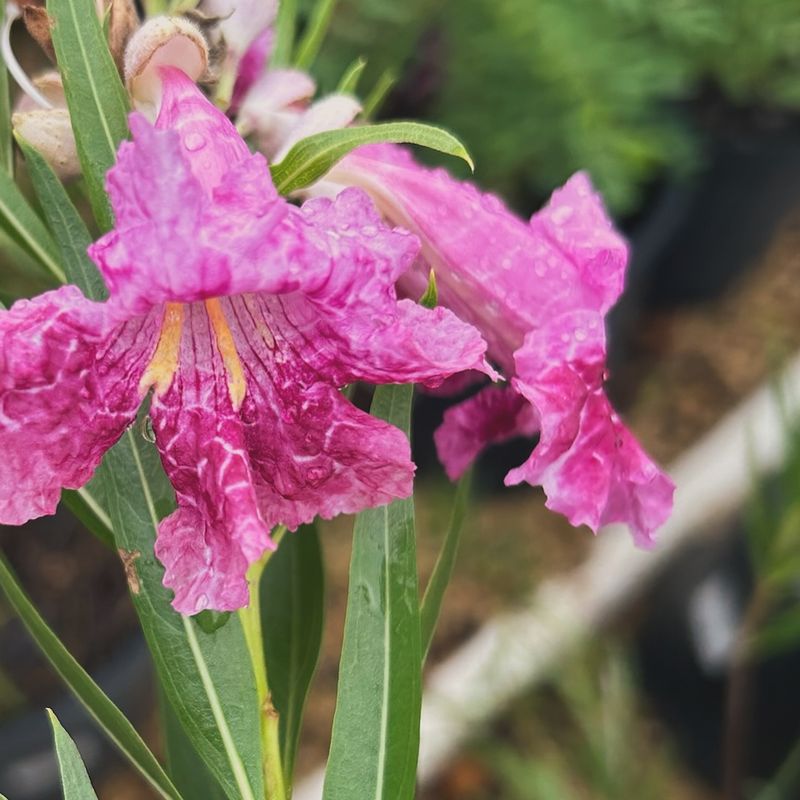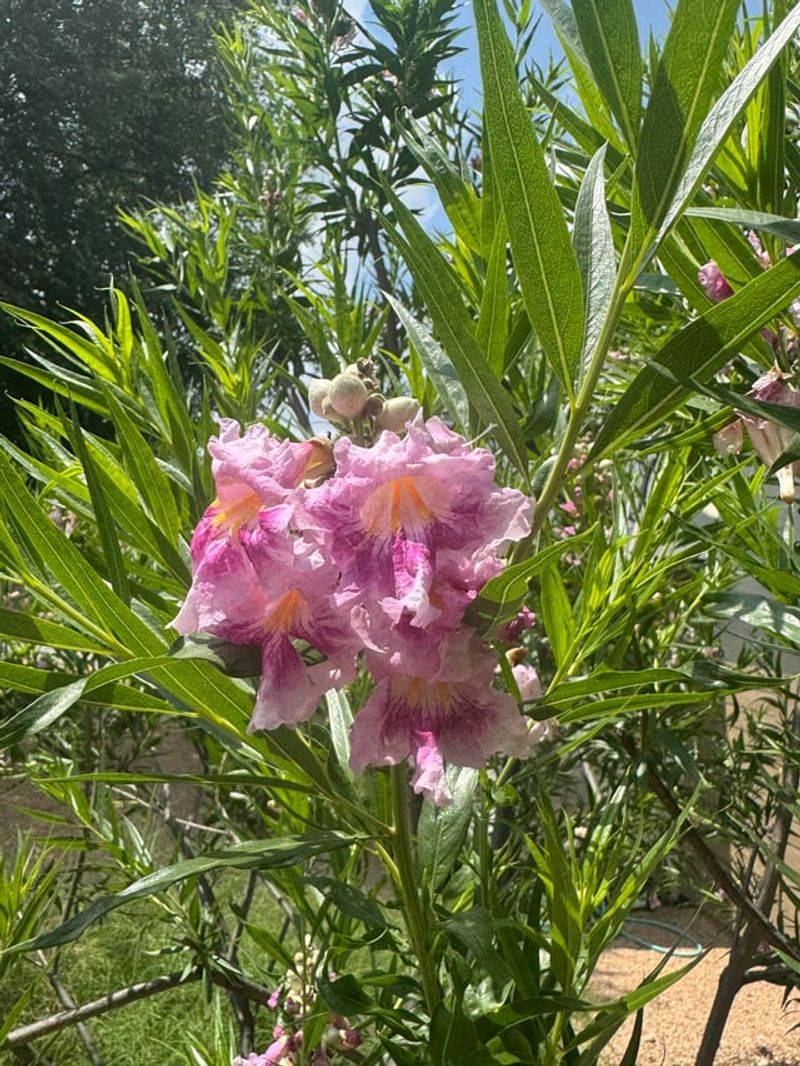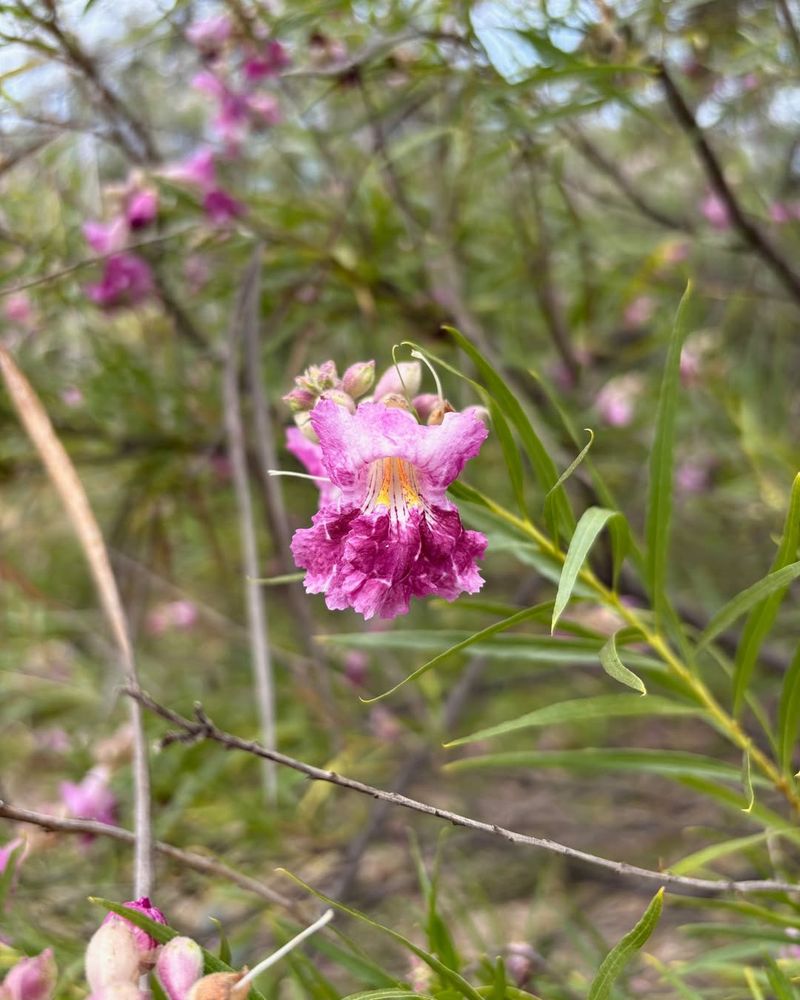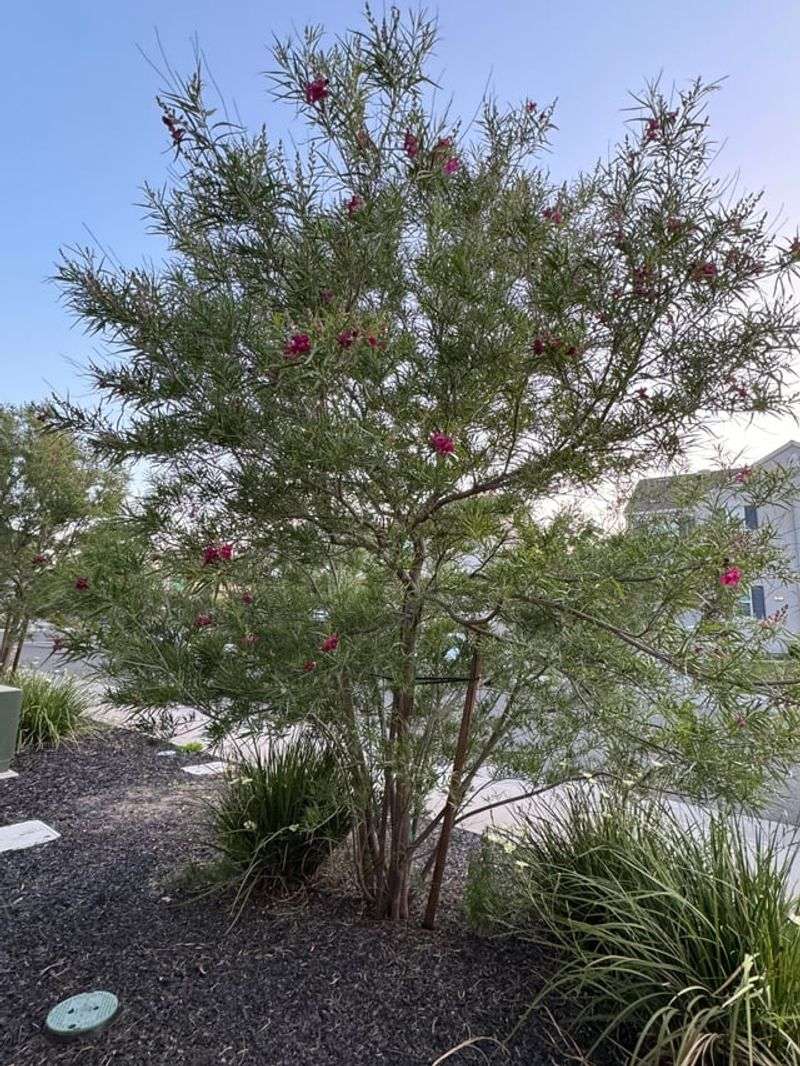Every autumn, something magical unfolds across Nevada’s desert landscape. The Desert Willow bursts into bloom, painting the scenery with vibrant color.
These stunning trees quickly become buzzing hubs for pollinators. Bees, butterflies, and more flock to their flowers for a much-needed feast.
I’ve seen how they turn quiet corners into lively ecosystems. During a critical time of year, Desert Willows offer beauty and vital support to local wildlife.
1. Late-Season Blooms Provide Critical Nectar Sources
Most desert plants finish flowering by late summer, leaving pollinators scrambling for food. Desert Willows break this pattern by producing fresh flowers well into October, sometimes even November in warmer areas.
Bees, hummingbirds, and butterflies desperately need these late-blooming flowers to build energy reserves before winter. Without this reliable food source, many pollinator populations would struggle to survive the colder months ahead when resources become scarce across Nevada’s landscape.
2. Trumpet-Shaped Flowers Perfectly Match Pollinator Anatomy
Nature designed Desert Willow flowers like custom-made feeding tubes. Their long, tubular shape fits perfectly with the tongues of hummingbirds and the proboscis of long-tongued bees.
Butterflies also love landing on the wide petal edges while they sip nectar from deep inside. This specialized shape means pollinators can access food efficiently while simultaneously picking up pollen on their bodies, creating a win-win relationship that benefits both the tree and its visitors throughout the fall season.
3. Abundant Pollen Production Feeds Hungry Bee Colonies
Fall is preparation time for bee colonies, and they need massive amounts of protein-rich pollen. Desert Willows produce generous quantities of golden pollen that bees collect to feed their young and stock their hives.
Native bees especially depend on this pollen source to strengthen their populations before winter dormancy begins. Watching bees emerge from these flowers covered head-to-toe in yellow dust shows just how productive these trees are at supporting pollinator nutrition during this crucial season.
4. Sweet Nectar Concentration Increases During Cooler Weather
Did you know? Desert Willow nectar actually becomes sweeter as temperatures drop in autumn. Cooler nights cause the sugar concentration in the nectar to increase, making it even more attractive to pollinators.
This extra-sweet reward gives butterflies and bees the high-energy fuel they need for migration or hibernation preparation. Hummingbirds migrating south through Nevada particularly benefit from this calorie-dense food source, which helps power their incredible journey across hundreds of miles to warmer climates.
5. Continuous Flowering Cycle Ensures Reliable Food Supply
Unlike plants that bloom once and finish, Desert Willows keep producing new flowers throughout the entire fall season. Individual blooms may last only a few days, but new ones constantly replace them.
Pollinators learn to trust this reliable pattern and return daily to feed. This consistency matters tremendously because pollinators can plan their foraging routes around these dependable food sources, reducing energy waste and improving their chances of gathering enough resources before winter arrives in Nevada’s high desert.
6. Vibrant Pink And Purple Colors Attract Pollinator Attention
Pollinators see colors differently than humans do, and Desert Willow flowers practically glow in their vision. The bright pink and purple petals with yellow striping create visual beacons that insects and birds can spot from impressive distances.
Bees particularly love purple hues, while hummingbirds zoom toward anything red or pink. Against the muted browns and greens of Nevada’s autumn desert, these colorful flowers stand out like neon signs advertising an all-you-can-eat buffet for hungry pollinators searching for sustenance.
7. Open Canopy Design Allows Easy Pollinator Access
Dense, crowded tree branches make it hard for flying pollinators to navigate safely. Desert Willows grow with an airy, open structure that gives bees, butterflies, and hummingbirds plenty of room to maneuver.
The graceful, spreading branches position flowers at various heights and angles, accommodating different pollinator preferences and flying styles. Smaller native bees appreciate lower blossoms, while hummingbirds zoom to higher flowers.
This thoughtful architecture makes feeding efficient and safe for creatures of all sizes visiting during Nevada’s beautiful fall weather.
8. Minimal Competition From Other Flowering Plants
By October, most Nevada wildflowers and shrubs have already dropped their petals and gone to seed. Desert Willows essentially own the pollinator market during fall because so few other plants are still blooming.
Without competition, these trees attract every pollinator in the area looking for food. Imagine being the only restaurant open in town when everyone is hungry.
That’s exactly what happens with Desert Willows each autumn, making them absolute magnets for bees, butterflies, and hummingbirds across Nevada’s desert communities.
9. Extended Warm Days In Nevada Prolong Pollinator Activity
Nevada’s desert climate delivers a special autumn gift with warm, sunny days that extend well into October and November. These pleasant temperatures keep pollinators active much longer than in colder regions.
Desert Willows take full advantage of this extended season by continuing to bloom while pollinators remain busy.
The combination of warm weather and available flowers creates perfect conditions for maximum pollinator activity, allowing bees to make extra trips and hummingbirds to fatten up before migration through Nevada’s stunning fall landscape.

